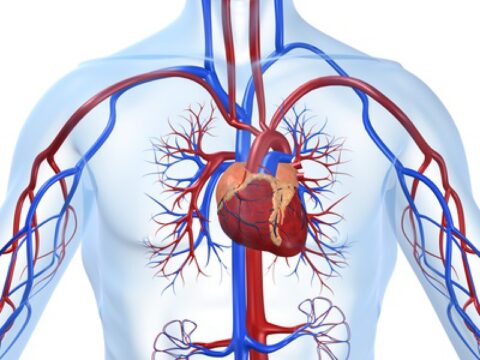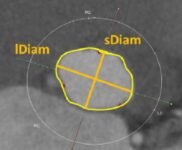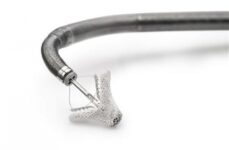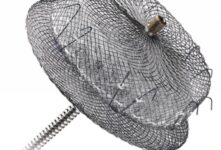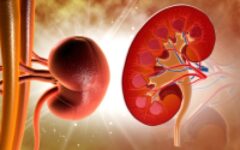Original title: Predictive Factors, Management and Clinical Outcomes of Coronary obstruction Following Transcatheter Aortic Valve Implantation Insight From a Large Multicenter Registry Reference: Henrique B. Ribeiro, et; al. J Am Coll Cardiology 2013;62:1552-62 Percutaneous implantation of the aortic valve is a valid strategy in high-risk surgical patients. One of the possible complications of this procedure is the occlusion…
Silent cerebral embolism during percutaneous valve implantation does not appear to cause cognitive impairment
Original title: Cognitive trajectory after transcatheter aortic valve implantation. Reference: Ghanem A et al. Circulation Cardiovasc Intervent. 2013;Epub ahead of print Several studies showed that silent cerebral embolism in patients undergoing percutaneous aortic valve replacement is frequent but seems that does not affect the long-term cognitive functions according to this new study. This study included 111 patients…
Flow-Gradient Patterns can help in the selection of patients with aortic stenosis
Original title: Flow-Gradient Patterns in Severe Aortic Stenosis UIT Preserved Ejection Fraction. Clinical Characteristic and Predictos of Survival. Reference: Eleid, M, et al. Circulation 2013;128:1781-1789 Severe aortic stenosis is usually defined by echocardiography as a 40 mm mean transvalvular gradient Hg at >4 m/s; but there are low flow or paradoxical low flow cases with different evolution. 1704…
Automatic measurement of the aortic annulus by TAC , more precisely to choose the correct valve size.
Original title: Automated 3-Dimensional Aortic Annular Assessment by Multidetector Computed Tomography in Transcatheter Aortic Valve Implantation. Reference: Yusuke Watanabe et al. J Am Coll Cardiol Intv 2013;6:955–64. Percutaneous aortic valve implantation ( TAVI ) has emerged as an alternative for patients with severe aortic stenosis and high surgical risk. While this technique was improved over the time, residual paravalvular regurgitation…
Low flow impact on outcomes following TAVI should be taken into account
Original title: Impact of Low Flow on the Outcome of High-Risk Patients Undergoing Transcatheter Aortic Valve Replacement. Reference: Florent Le Ven, et al. J Am Coll Cardiol 62;9:792-788 A study of low flow (SVi <35ml/m2) in the context of severe aortic stenosis has shown it is a predictor of worse outcomes after surgery, even though evolution with medical…
Implanting a second valve and embolization are two complications that increase mortality
Original title: Determinats and Outcomes of Acute transcatheter Valve-in Valve Therapy or Embolization. Reference: Raj R Makkar, et al. J Am Coll Cardiol 2013;62:418-30 Percutaneous aortic valve implantation has proven to be feasible, safe and a successful follow up. Only in a few patients is the two-valve implantation necessary due to bad positioning or embolism but…
Percutaneous mitral valve treatment is a valid alternative in the long term
Original title: 4-Year Results of a Randomized Controlled Trial of Percutaneous Repair Versus surgery for Mitral Regurgitation. Reference: Laura Mauri, et al. J Am Coll Cardiol 2013;62:317-28 Surgical treatment of mitral regurgitation (MR) is currently recommended by either valve replacement or valvuloplasty. Devices are being developed to address this disease giving the benefits of percutaneous treatments. The EVEREST…
Percutaneous Left Atrial Appendage Suture: more options in atrial fibrillation patients with antiguagulation contraindication
Original title: Percutaneous Left Atrial Appendage Suture Ligation Using the Lariat Device In Patines UIT Atrial Fibrillation Reference: Krystof Bartus, et al. J Am Coll Cardiol 2013;62:108–18. Atrial fibrillation (AF) is the most frequent arrhythmia and is associated with a 5 fold increase in stroke risk and the resulting morbimortality. Warfarin anticoagulation therapy can be effective but only…
Percutaneous Left Atrial Appendage Closure With the AMPLATZER : a valid alternative when anticoagulation is contraindicated
Original title: Percutaneous Left Atrial Appendage Closure With the AMPLATZER Cardiac Plug Device in Patients With Nonvalvular Atrial Fibrillation and Contraindication to Anticoagulation Therapy Reference: Marina Urena, et al. J Am Coll Cardiol 2013:62:96-102. Anticoagulation is a good therapeutic strategy in nonvascular atrial fibrillation (AF). However, it is contraindicated in approximately 10% of patients, due to the…
Thoracoscopic Stand-Alone Left Atrial Appendectomy
Original title: Thoracoscopic Stand-Alone Left Atrial Appendectomy for Thromboembolism Prevention in Nonvalvular Atrial Fibrilation. Reference: Toshiya Ohtsuka, et al. J Am Coll Cardiol 201362;2:103-107 Anticoagulation is commonly prescribed as prevention therapy against AF-induced thromboembolism. However, even a correct prescription may result in an unexpected stroke due to cardioembolic stroke. Different left atrial appendectomy techniques and devices are currently…
What is the contrast media dosing that predicts acute kidney injury after TAVI?
Original title: Renal Function-Based Contrast Dosing Predicts Acute Kidney Following Trancatheter Aortic Valve Implantation Reference: Masanori Yamamoto, et al. J Am Coll Cardiol Intv 2013;6:479–86. Acute kidney injury (AKI) presents in 10 to 30% of patients undergoing TAVI; it is associated to the increase of morbidity and mortality and it prolongues hospitalization. This study included 415 patients with…
